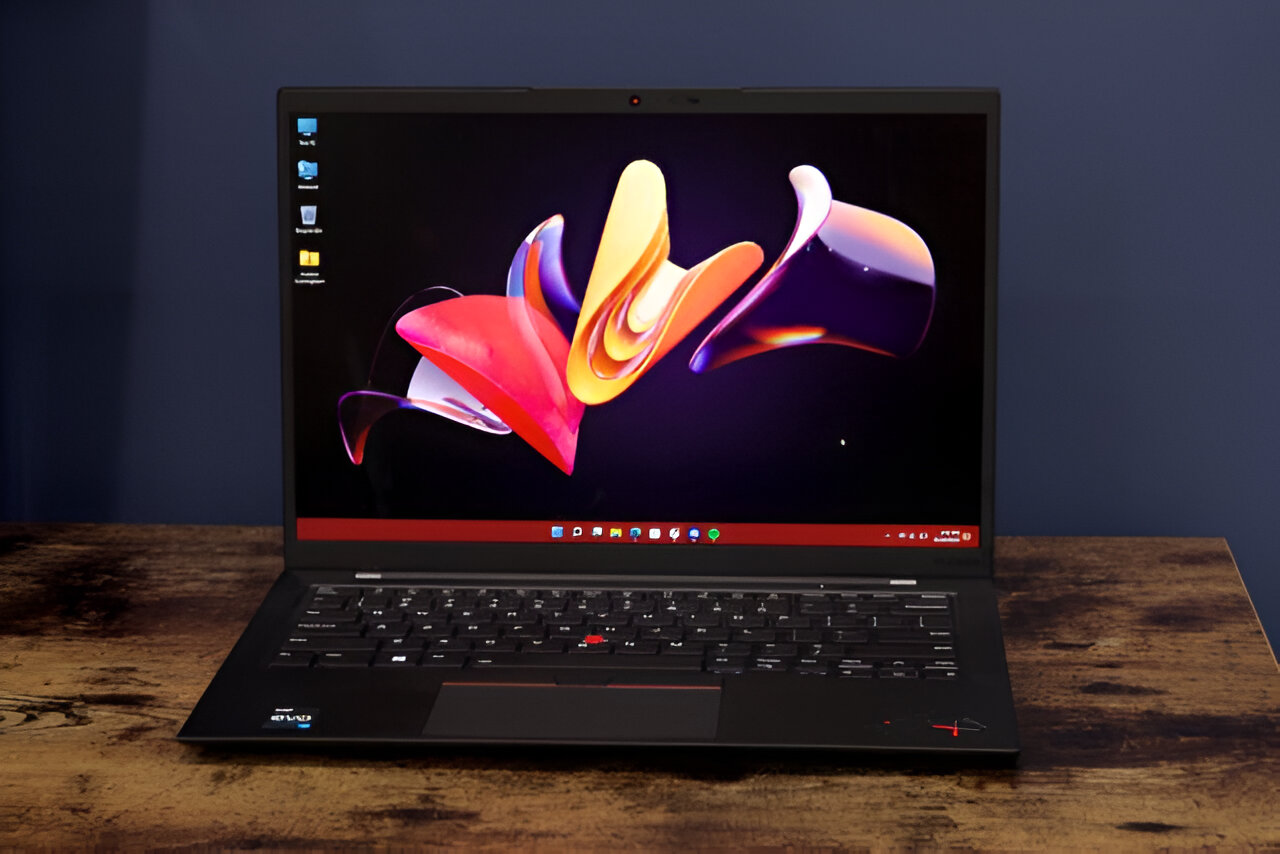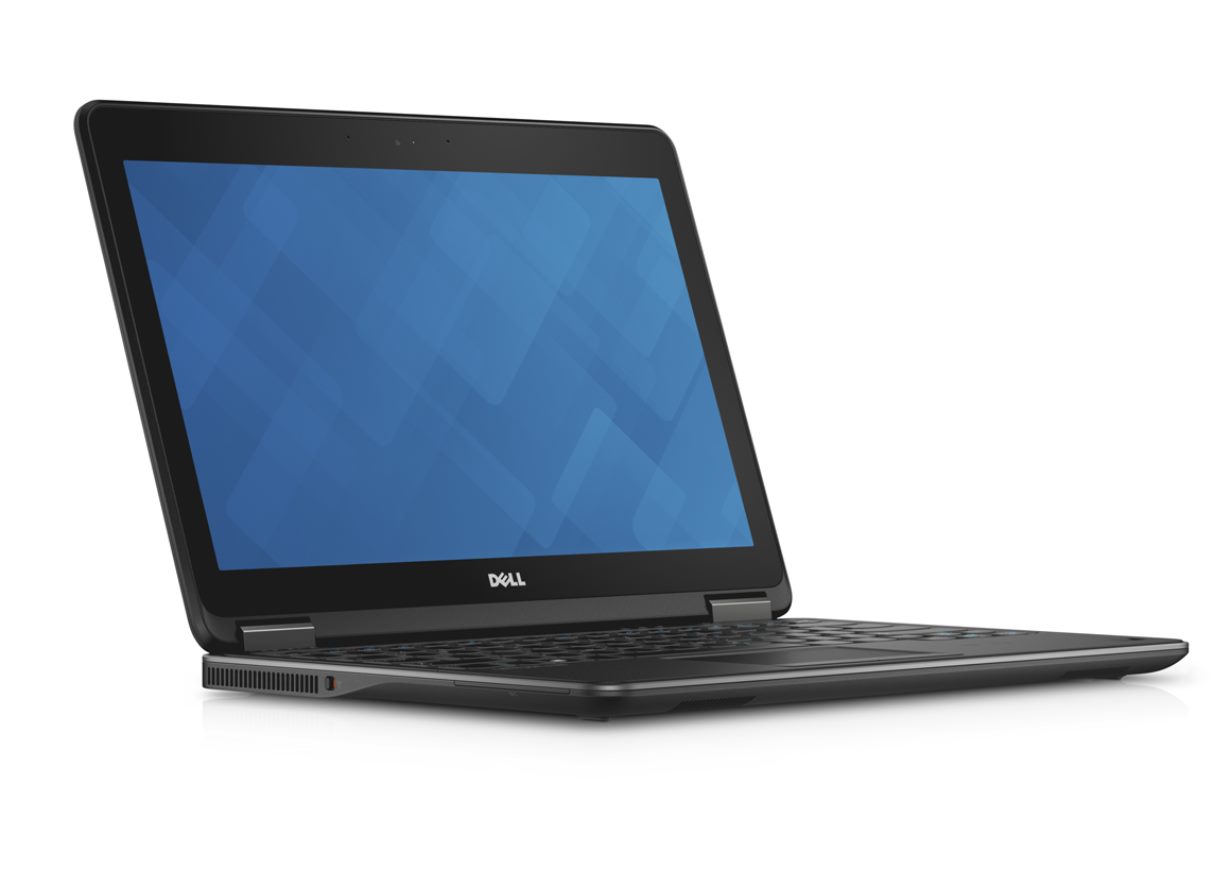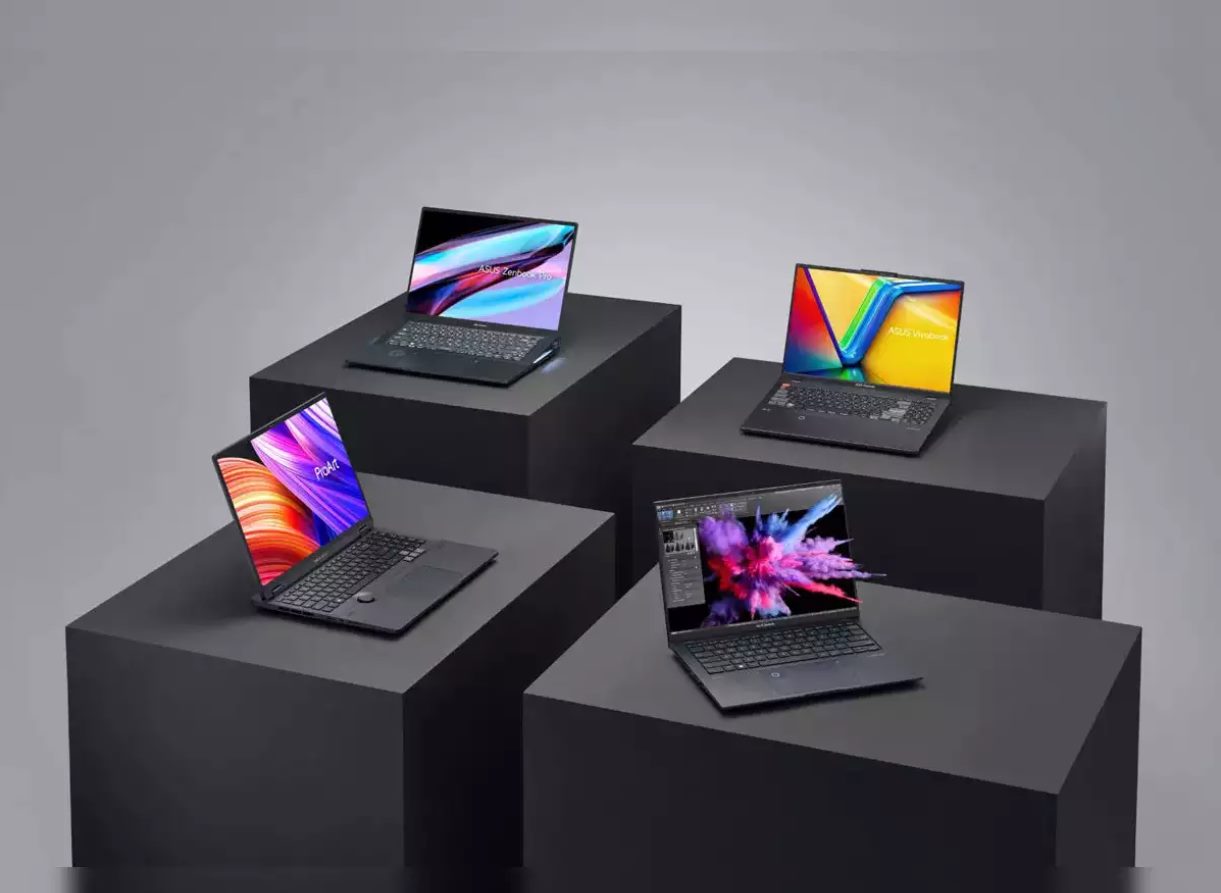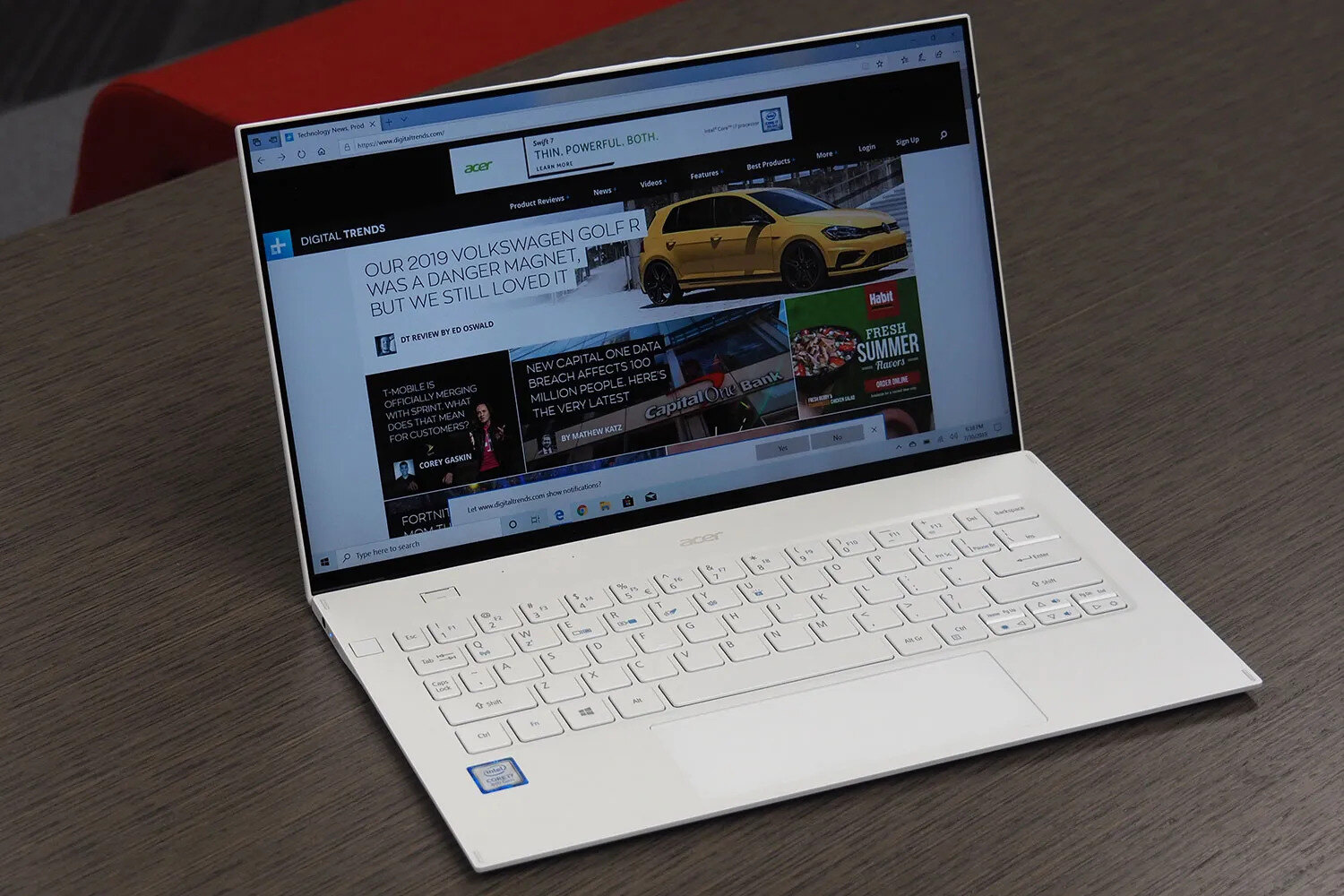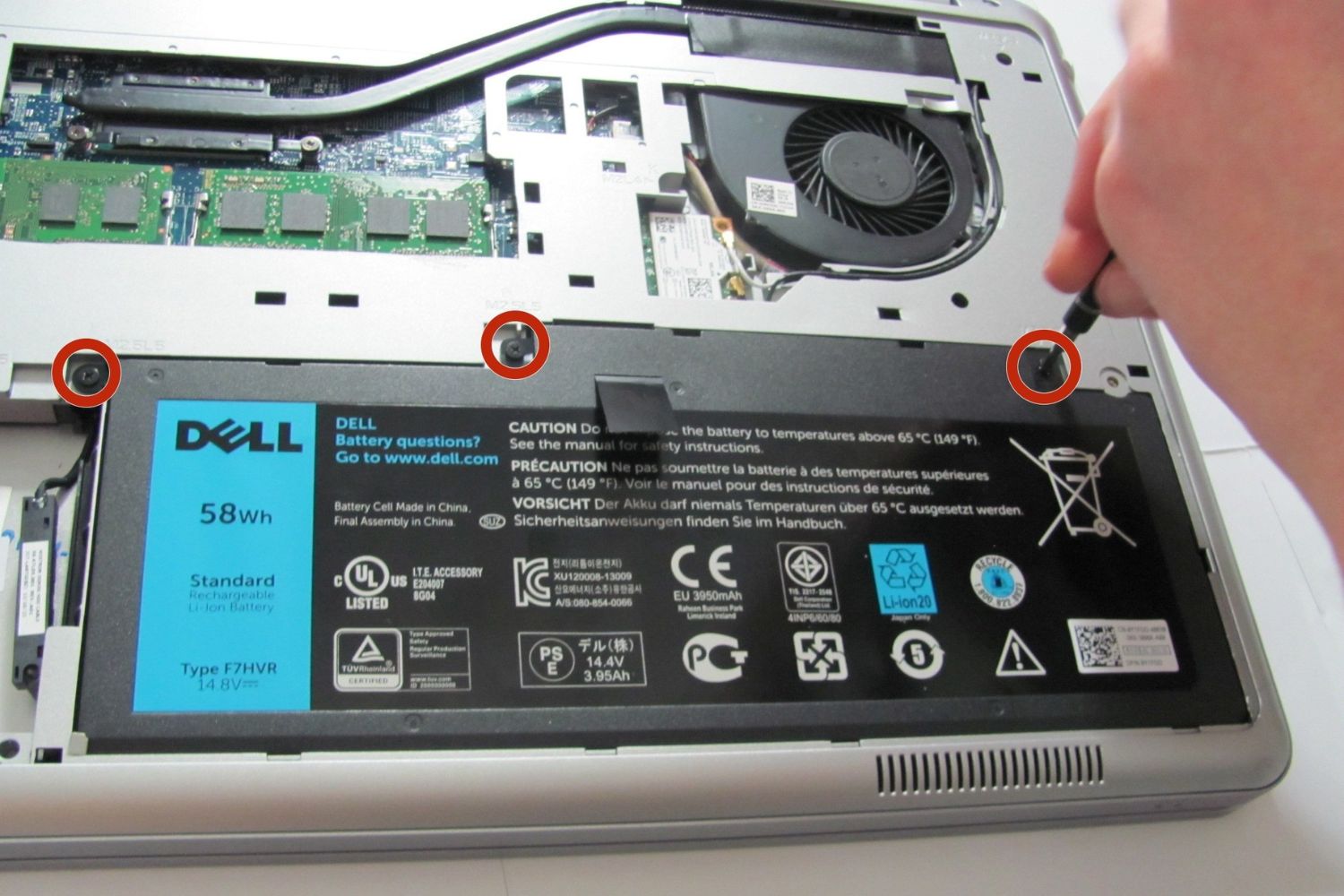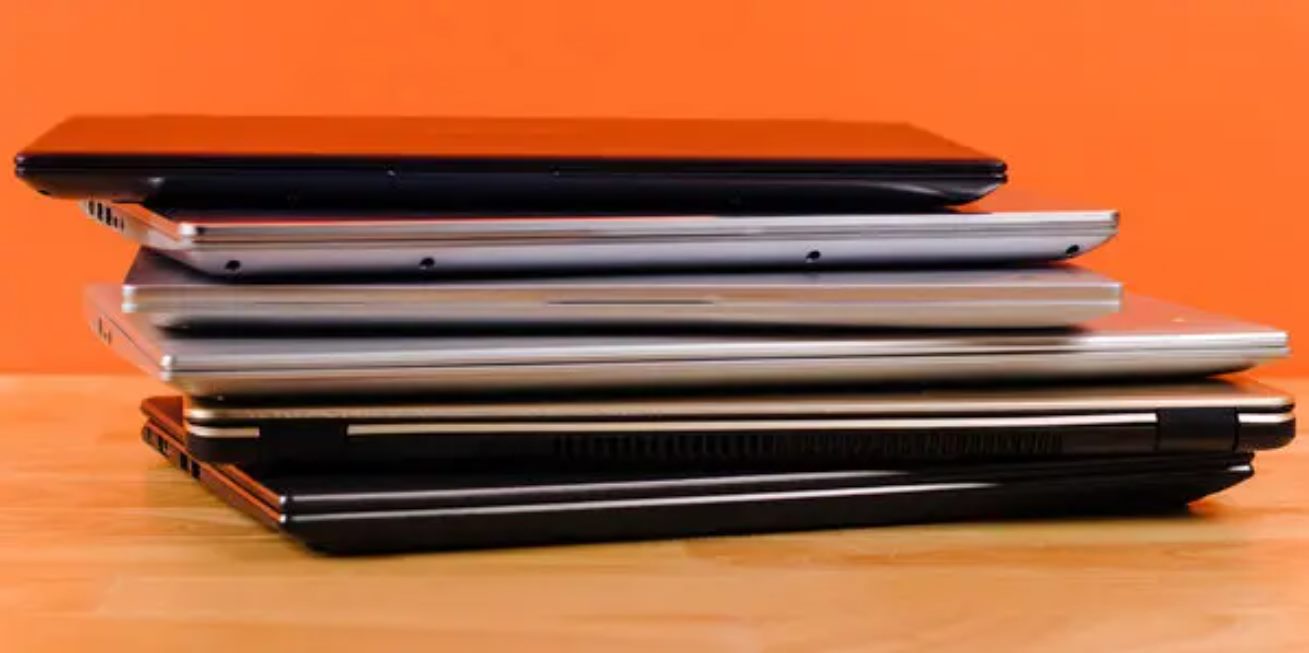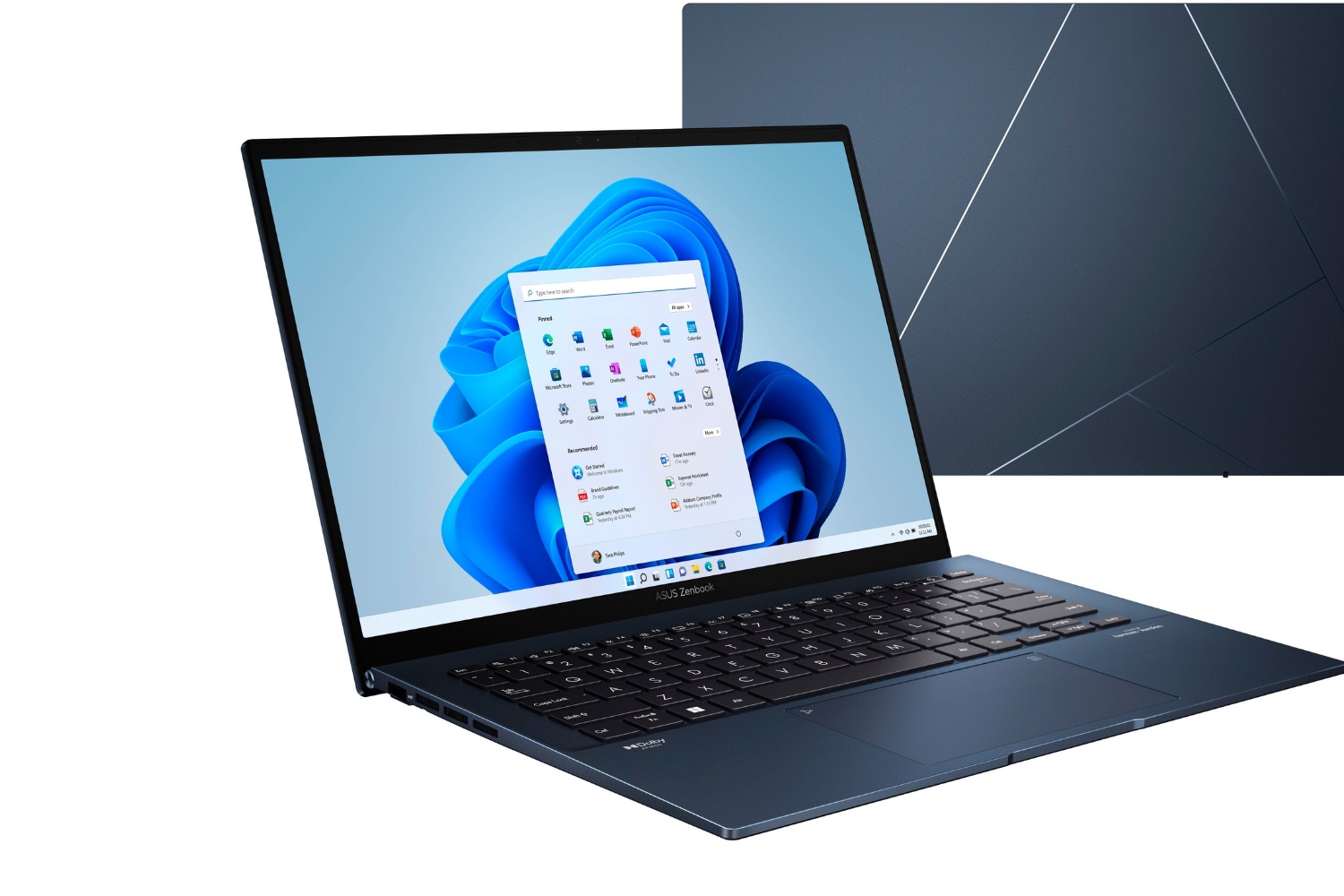Introduction
Do you find yourself constantly running out of battery life on your Lenovo Ultrabook? It can be frustrating to have to constantly search for an outlet or carry around a bulky charger. However, with a few simple tweaks and adjustments, you can significantly improve the battery life of your Lenovo Ultrabook. In this article, we will explore various tips and tricks to help you get the most out of your laptop’s battery.
Lenovo Ultrabooks are known for their sleek designs and powerful performance, but they also have a reputation for draining battery quickly. While the latest models come with improved battery life, it’s essential to optimize your device’s settings and usage patterns to ensure maximum efficiency.
By implementing the strategies outlined in this article, you can extend your Lenovo Ultrabook’s battery life and enjoy uninterrupted productivity and entertainment on the go. Whether you’re a student, a professional, or someone who prefers to work remotely, these tips will help you make the most out of your device’s battery.
Before we delve into the specific strategies, it’s important to note that battery life can vary depending on the model and specifications of your Lenovo Ultrabook. The tips we will discuss are general guidelines, but it’s always a good idea to refer to your device’s user manual or Lenovo’s support page for model-specific information.
Now, without further ado, let’s explore the various ways you can improve your Lenovo Ultrabook’s battery life and enhance your overall user experience.
Check Power Settings
The first step in improving the battery life of your Lenovo Ultrabook is to check and optimize the power settings. By adjusting the power settings, you can customize the energy usage of your device to match your needs and preferences. Here’s what you can do:
- Power Plan: Go to the Control Panel and select the Power Options. Choose a power plan that is designed for maximum battery life, such as the “Power Saver” option. This setting reduces the performance of your laptop to conserve power.
- Screen Brightness: Lower the screen brightness to a comfortable level. The brighter the screen, the more power it consumes. You can either adjust the brightness manually or enable the “Adaptive Brightness” feature that automatically adjusts the screen brightness based on ambient lighting conditions.
- Sleep and Hibernate: Adjust the sleep and hibernate settings to ensure your Ultrabook enters power-saving modes when not in use. Set the display and computer to turn off after a certain period of inactivity. However, avoid setting the sleep mode timing too short, as this can result in frequent power cycles, which can reduce battery life.
- Wi-Fi and Bluetooth: Disable Wi-Fi and Bluetooth when not needed. These wireless features consume power even when not in use. You can either turn them off manually or use the Airplane mode to disable all wireless connections at once.
- Background Apps: Close unnecessary background apps and processes that consume battery power. Many apps continue running in the background even when you’re not actively using them. To check for running apps, press Ctrl+Shift+Esc to open the Task Manager and end any unnecessary processes.
By adjusting these power settings, you can optimize your Lenovo Ultrabook’s energy usage and prolong its battery life. Remember to find the right balance between power-saving settings and your performance requirements. Experiment with different settings to determine the best configuration for your specific needs.
Close Unnecessary Applications and Processes
One of the quickest ways to drain your Lenovo Ultrabook’s battery is by running multiple applications and processes simultaneously. Many applications, especially resource-intensive ones, continue running in the background even when you’re not actively using them. Here’s how you can close unnecessary applications and processes to conserve battery life:
- Task Manager: Open the Task Manager by pressing Ctrl+Shift+Esc or right-clicking on the taskbar and selecting Task Manager. In the Processes tab, identify applications that are consuming a significant amount of CPU resources. Close those applications by selecting them and clicking on the “End Task” button.
- System Tray: The system tray, located in the bottom-right corner of the screen, contains icons for various running applications and processes. Right-click on unnecessary icons and choose “Exit” or “Close” to shut down those applications.
- Startup Programs: Some applications automatically launch when you start your Ultrabook, consuming valuable system resources and draining battery life. To manage startup programs, open the Task Manager, go to the Startup tab, and disable unnecessary programs. This will prevent them from launching automatically and running in the background.
- Browser Tabs and Extensions: If you often have multiple tabs open in your web browser, it can significantly impact your Ultrabook’s battery life. Close unused tabs and disable unnecessary browser extensions to minimize resource usage. You can also consider using a tab management extension that suspends inactive tabs to conserve system resources.
- Background Syncing: Some applications, such as cloud storage services and email clients, continually sync data in the background. This constant syncing consumes battery power. Disable or adjust the sync settings of these applications to reduce battery usage. You can usually find the sync settings in the application’s preferences or settings menu.
By closing unnecessary applications and processes, you can free up system resources and reduce the power consumption of your Lenovo Ultrabook. Regularly monitor running applications and ensure that only essential programs are running to maximize battery life.
Adjust Brightness and Screen Timeout
The screen of your Lenovo Ultrabook is one of the most power-hungry components. The brighter the screen, the more battery power it consumes. By adjusting the brightness and screen timeout settings, you can significantly improve the battery life. Here’s what you can do:
- Brightness: Reduce the brightness of your screen to the lowest comfortable level. Most Ultrabooks have function keys or dedicated buttons on the keyboard to adjust brightness. Alternatively, you can adjust the brightness in the display settings of your operating system.
- Adaptive Brightness: Consider enabling the “Adaptive Brightness” feature if your Ultrabook has it. This feature automatically adjusts the screen brightness based on the ambient lighting conditions. It can help conserve battery power by lowering the brightness in dimly lit environments.
- Screen Timeout: Set a shorter screen timeout duration so that the screen turns off when not in use. This prevents the screen from staying on unnecessarily, consuming battery power. You can adjust the screen timeout settings in the power options or display settings of your operating system.
- Screensaver: Disable or set a simple screensaver instead of using visually-intensive screensavers. Screensavers that include animations or graphics can increase power consumption. Setting a blank screen as the screensaver is an energy-efficient option.
By adjusting the brightness and screen timeout settings, you can conserve battery power without compromising your viewing experience. Experiment with different brightness levels and screen timeout durations to find the optimal settings for your needs.
Remember to manually adjust the brightness when needed. For example, you can increase the brightness when working in brightly lit environments or decrease it when using your Ultrabook in darker settings.
It’s worth noting that the screen brightness settings may vary depending on the specific model of your Lenovo Ultrabook and the operating system you’re using. Refer to your device’s user manual or Lenovo’s support page for detailed instructions on adjusting brightness and screen timeout settings.
Disable Background Apps and Syncing
Background apps and automatic syncing can be major culprits when it comes to draining your Lenovo Ultrabook’s battery. These processes consume valuable system resources and continuously use power, even when you’re not actively using your laptop. Here’s how you can disable background apps and syncing to conserve battery life:
- Background Apps: Many applications have background processes that run even when the main app is closed. These processes can consume CPU resources and drain your battery. To disable background apps, go to the settings or preferences of each app and look for options related to background activity. Disable any unnecessary background processes to reduce power consumption.
- Automatic Syncing: Cloud storage services, email clients, and other applications often have automatic syncing features that constantly update data in the background. While syncing can be convenient, it can also lead to increased power consumption. Adjust the sync settings for each app to specify when and how often data should be synced. Consider disabling or limiting automatic syncing to conserve battery life.
- Notifications: Notifications from various apps can not only be distracting but can also drain your battery. Each notification requires power to display and process. Review the notification settings of your applications and disable notifications for apps that are not essential. This will reduce the number of background processes and help extend your Ultrabook’s battery life.
- Location Services: Some apps access your device’s location data, even when not in use. This constant tracking requires additional power. Disable location services for apps that do not require it, or set them to use location data only when the app is actively being used.
By disabling unnecessary background apps and syncing, you can significantly reduce power consumption and extend the battery life of your Lenovo Ultrabook. Take some time to review the settings of your installed applications and optimize them for power efficiency.
Keep in mind that not all apps have extensive customization options when it comes to background activity and syncing. In such cases, consider closing or exiting the app when you’re not actively using it to prevent it from consuming system resources and draining your battery.
Additionally, periodically review and update your app lineup. Remove any old or rarely used applications from your Ultrabook to reduce the overall number of background processes and improve power efficiency.
Use Battery Saver Mode
If you’re looking for a quick and easy way to extend your Lenovo Ultrabook’s battery life, utilizing the built-in Battery Saver mode can be highly effective. Battery Saver is a power-saving feature that modifies the settings of your device to conserve energy. Here’s how you can use Battery Saver mode to maximize your Ultrabook’s battery performance:
- Activate Battery Saver: On your Lenovo Ultrabook, go to the battery icon in the system tray and click on it. Select the Battery Saver option from the menu. You can also access Battery Saver settings in the Power Options section of the Control Panel or the Battery settings in the Windows Settings menu.
- Adjust Battery Saver Settings: When enabling Battery Saver, you can often customize its behavior. You can specify at what battery percentage it should automatically turn on, adjust the screen brightness, limit background activity, and control other power-saving features. Experiment with the settings to find the right balance between energy conservation and performance for your specific needs.
- Task Prioritization: Battery Saver may also prioritize certain tasks and processes. For example, it can limit the performance of resource-intensive applications to reduce power consumption. While in Battery Saver mode, make sure to close unnecessary apps and avoid running demanding tasks that can quickly deplete your battery.
- Disable Non-Essential Features: Battery Saver mode often disables or reduces the functionality of non-essential features that consume significant power. This can include animations, visual effects, and background processes. It’s worth noting that some features may be restricted when Battery Saver is enabled, so be aware of any limitations that may impact your usage.
By enabling and optimizing the Battery Saver mode on your Lenovo Ultrabook, you can conserve power and extend your device’s battery life. This feature is especially useful when you’re on the go and don’t have immediate access to a power source. However, keep in mind that Battery Saver mode may limit certain features and reduce performance, so it’s important to find the right balance between energy savings and your specific needs.
Remember to disable Battery Saver mode when you have access to a power outlet or when you want to maximize your device’s performance. It’s a great tool to have at your disposal, but it shouldn’t be enabled at all times unless necessary.
Take advantage of Battery Saver mode on your Lenovo Ultrabook to make the most out of every charge and optimize your device’s battery life.
Upgrade to SSD
Upgrading your Lenovo Ultrabook’s storage drive from a traditional hard disk drive (HDD) to a solid-state drive (SSD) can have a significant impact on both performance and battery life. SSDs are faster, more durable, and consume less power compared to HDDs. Here’s why upgrading to an SSD can help improve your Ultrabook’s battery life:
Lower Power Consumption: Unlike traditional HDDs, SSDs have no moving parts and rely on flash memory technology. This makes them more energy-efficient, as they require less power to operate. With an SSD, your Ultrabook will experience reduced power draw, resulting in improved battery performance and longer battery life.
Faster Boot and Load Times: SSDs offer significantly faster boot-up and application load times compared to HDDs. The quicker your Ultrabook can complete these tasks, the less time it spends consuming power. This efficiency translates into more battery life for your device.
Efficient Power Management: SSDs are designed with power management features that allow them to optimize energy usage. They can enter low-power states during periods of inactivity, reducing power consumption and extending battery life. Additionally, SSDs have faster read and write speeds, which means the CPU can complete tasks more quickly, reducing overall power usage.
Lightweight and Durable: SSDs are lighter and more compact than HDDs, making them an ideal choice for Ultrabooks. The reduced weight and size contribute to better energy efficiency and extended battery life. Additionally, SSDs have no moving parts, making them less susceptible to damage from shocks or vibrations, ensuring their longevity and reliability.
While upgrading to an SSD can be a considerable investment, the performance and power benefits make it a worthwhile choice for improving your Lenovo Ultrabook’s battery life. When selecting an SSD, consider the storage capacity you require and opt for a reputable brand known for delivering high-quality products.
Before proceeding with the upgrade, make sure to back up your data and follow the manufacturer’s instructions regarding installation and migration of your operating system and files to the new SSD. If you’re not comfortable performing the upgrade yourself, seek assistance from a qualified technician to ensure a seamless transition.
Overall, upgrading to an SSD can significantly enhance your Ultrabook’s performance and battery life, offering a faster, more efficient, and longer-lasting computing experience.
Limit Use of USB Devices
While USB devices are convenient for expanding the capabilities of your Lenovo Ultrabook, they can also contribute to increased power consumption and reduced battery life. USB devices, such as external hard drives, flash drives, and gaming peripherals, draw power from your Ultrabook’s battery to function. Here are some tips to help you limit the use of USB devices and maximize your Ultrabook’s battery life:
- Disconnect Unused Devices: When not in use, disconnect any USB devices from your Ultrabook. This prevents unnecessary power drain, as even idle devices can draw a small amount of power from the USB ports.
- Use USB Devices Sparingly: Assess which USB devices you truly need for your current computing tasks and only connect those devices. Minimizing the number of USB devices connected at once decreases power consumption and allows your Ultrabook to allocate more energy to other essential processes.
- Power off or Eject USB Devices: Properly power off or eject USB devices when you are done using them. This ensures that they stop consuming power from your Ultrabook’s battery. Simply unplugging them without ejecting can still result in power being drawn from the USB port.
- Disable USB Devices in Device Manager: If you have unused USB devices that you don’t plan on disconnecting physically, you can disable them through the Device Manager. This prevents them from drawing power from your Ultrabook’s battery while still connected.
- Consider Wireless Alternatives: For certain functions, such as file transfer or connecting peripherals, consider using wireless alternatives instead of USB devices. For example, wireless external hard drives or wireless mouse and keyboard setups can reduce the need for physical connections and thus decrease power consumption.
- Charge USB Devices Separately: If you have USB devices that require charging, consider charging them through a separate power source, such as a wall charger or a dedicated USB charging hub. This can prevent your Ultrabook from providing power to these devices and preserve its battery life.
By limiting the use of USB devices and taking steps to minimize their power consumption, you can optimize your Lenovo Ultrabook’s battery life. Remember to prioritize the devices you truly need and disconnect or disable any unused or non-essential USB devices to conserve power.
Keep in mind that certain USB devices, such as external hard drives or power-hungry peripherals, may have a more significant impact on battery life compared to others. Use your discretion when deciding which devices to connect and consider alternative options that require less power whenever possible.
Implementing these practices will help you strike a balance between the functionality of USB devices and the battery life of your Lenovo Ultrabook, ensuring a longer-lasting and more efficient computing experience.
Use a Cooling Pad
Overheating can not only affect the performance of your Lenovo Ultrabook but also have a negative impact on its battery life. When your laptop’s internal components generate excessive heat, the cooling system has to work harder to dissipate it. This increased workload can drain the battery at a faster rate. Using a cooling pad can help mitigate overheating and improve the battery life of your Ultrabook. Here’s how:
- Improved Airflow: A cooling pad helps improve the airflow around your laptop, allowing for better heat dissipation. Most cooling pads have built-in fans that blow cool air onto the bottom of your Ultrabook. This helps prevent the internal components from overheating and reduces the workload on the cooling system, resulting in less power consumption.
- Elevated Laptop Position: Cooling pads also elevate your Ultrabook, creating a gap between the laptop and the surface it sits on. This elevation allows for better airflow and helps cool the laptop more efficiently. By keeping your laptop cooler, you reduce the need for the internal fans to work harder, which, in turn, leads to less power consumption and improved battery life.
- Reduction in Fan Noise: If your laptop’s internal fans tend to run at high speeds and produce noticeable noise, a cooling pad can help alleviate this issue. By reducing the temperature of your Ultrabook and preventing it from overheating, the fans don’t have to work as hard, resulting in quieter operation.
- Comfortable Laptop Usage: A cooling pad not only helps cool your Ultrabook but also provides a more comfortable typing and viewing experience. The elevated position can alleviate strain on your wrists and neck, allowing for extended durations of comfortable laptop usage.
- Portability and Flexibility: Cooling pads are designed to be portable and lightweight, making them easy to carry around. Additionally, most cooling pads connect to your laptop via a USB port, drawing power from the laptop itself. This means you don’t need to worry about carrying extra batteries or power adapters.
Using a cooling pad is a practical and cost-effective solution to improve the battery life of your Lenovo Ultrabook. By reducing the risk of overheating, you can ensure that your laptop operates optimally and lasts longer on a single charge.
It’s important to choose a cooling pad that is compatible with the size and design of your Ultrabook. Look for a cooling pad that provides sufficient airflow and has adjustable fan speeds to suit your needs. Additionally, ensure that the cooling pad does not obstruct any necessary ports or cables on your Ultrabook.
Investing in a cooling pad can help keep your Lenovo Ultrabook cool, quiet, and energy-efficient, ultimately extending its battery life and enhancing your overall computing experience.
Regularly Update Drivers and Firmware
Keeping your Lenovo Ultrabook’s drivers and firmware up to date is crucial for optimizing performance, stability, and battery life. Manufacturers often release updates that address bugs, improve compatibility, and enhance power management. Here’s why regularly updating your drivers and firmware is important:
- Improved Hardware Functionality: Driver updates can bring performance improvements by optimizing the communication between your Ultrabook’s hardware components and the operating system. By ensuring that your drivers are up to date, you can enhance power management features and reduce power consumption, leading to improved battery life.
- Bug Fixes and Stability: Firmware updates, as well as driver updates, often contain bug fixes and stability improvements. By installing these updates, you can address any issues that could be affecting your Ultrabook’s performance or causing unexpected crashes. Maintaining a stable system contributes to more efficient power usage and longer battery life.
- Compatibility with New Software: As new software applications and operating system updates are released, they may require updated drivers or firmware to function properly. By ensuring that your drivers and firmware are up to date, you can avoid compatibility issues that could impact performance and consume unnecessary power.
- Power Management Enhancements: Manufacturers often release firmware updates that improve power management capabilities. These updates can optimize the energy usage of various components, such as the processor, display, and wireless modules. By regularly updating your firmware, you can benefit from these power-saving enhancements and extend your Ultrabook’s battery life.
- Manufacturer Support and Security Patches: Driver and firmware updates often include security patches that address vulnerabilities or protect against potential threats. By applying these updates, you can ensure that your Ultrabook is protected from the latest security risks. Additionally, regularly updating your drivers and firmware ensures that you can receive support from the manufacturer, should any issues arise.
To update the drivers and firmware on your Lenovo Ultrabook, visit the manufacturer’s support website. They typically provide downloads and instructions specific to your model. Follow the recommended process to install the updates, and pay attention to any additional guidelines or recommendations provided by the manufacturer.
Make it a habit to regularly check for driver and firmware updates for your Ultrabook, especially after major operating system updates or when encountering performance issues. Staying up to date ensures that your Ultrabook remains optimized, stable, and energy-efficient, providing you with the best possible battery life and overall user experience.
Conclusion
Improving the battery life of your Lenovo Ultrabook is essential for maximizing productivity and ensuring a seamless and uninterrupted computing experience. By implementing the tips and strategies outlined in this article, you can extend the battery life of your device and reduce the need for frequent recharging. Let’s recap some of the key takeaways:
- Optimize power settings by choosing a power plan designed for maximum battery life and adjusting screen brightness and sleep settings.
- Close unnecessary applications and processes to free up system resources and minimize power consumption.
- Adjust screen brightness and screen timeout to conserve energy and ensure efficient power utilization.
- Disable background apps and syncing to prevent unnecessary power drain and reduce battery usage.
- Utilize Battery Saver mode to automatically adjust settings and conserve power when needed.
- Consider upgrading to an SSD to benefit from improved performance and lower power consumption.
- Limit the use of USB devices to reduce power draw and preserve battery life.
- Use a cooling pad to maintain an optimal operating temperature and prevent heat-related battery drain.
- Regularly update drivers and firmware to enhance power management features and ensure stability.
Remember, the specific steps and settings may vary depending on your Lenovo Ultrabook model and operating system. Consult the user manual or Lenovo’s support page for model-specific instructions and recommendations.
By incorporating these practices into your daily routine, you can significantly enhance the battery life of your Lenovo Ultrabook. Not only will you enjoy longer periods of productivity and entertainment on the go, but you’ll also reduce energy consumption and contribute to a more sustainable computing experience.
So, start implementing these battery-saving strategies today and unlock the full potential of your Lenovo Ultrabook!







